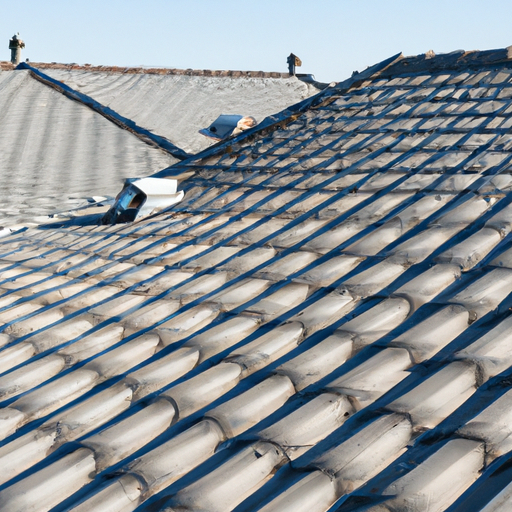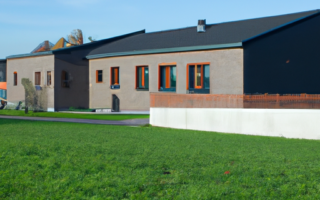The Importance of Regular Commercial Roofing Maintenance
Commercial roofing is a crucial aspect of any business establishment. It protects the building, its contents, and the people inside from the harsh elements. To ensure its longevity and efficiency, regular commercial roofing maintenance is essential. This article will provide a comprehensive guide on commercial roofing maintenance, offering tips for long-term success.
1. Inspection: Regular inspections are fundamental to identify any potential issues or damage early on. Inspect the roof at least twice a year, preferably in the spring and fall, and after any major weather events. Look for signs of wear and tear, leaks, cracks, or loose shingles. Addressing these issues promptly can prevent further damage.
2. Clear Debris: Leaves, branches, and other debris can accumulate on the roof, causing drainage issues and potential damage. Regularly clear any debris to maintain proper water flow and prevent blockages.
3. Clean Gutters and Drains: Clogged gutters and drains can cause water to pool on the roof, leading to leaks and structural damage. Clean gutters and drains regularly to ensure proper water drainage.
4. Trim Surrounding Trees: Overhanging branches can damage the roof during storms or strong winds. Trim any overhanging branches to prevent them from scraping or falling onto the roof.
5. Repair or Replace Damaged Shingles: Damaged or missing shingles can compromise the integrity and effectiveness of the roof. Replace any damaged or missing shingles promptly to prevent water leaks and further damage.
6. Check Seals and Flashing: Seals and flashing help protect vulnerable areas of the roof, such as joints and edges. Regularly inspect these areas for signs of damage or deterioration and repair or replace them as needed.
7. Schedule Professional Maintenance: While regular inspections and maintenance can be done in-house, it is advisable to schedule professional maintenance at least once a year. Professional roofers have the expertise to identify underlying issues and provide necessary repairs or recommendations.
8. Document Maintenance: Keep a record of all maintenance activities, including inspections, repairs, and professional maintenance visits. This documentation can help track the roof’s condition over time and assist in warranty claims or insurance purposes.
In conclusion, regular maintenance is crucial for the long-term success of commercial roofing. By following these essential tips, businesses can ensure their roofs remain in optimal condition, protecting their investments and providing a safe environment for employees and customers alike. Remember, a well-maintained roof is a sound investment for any commercial establishment.
Top Tips for Achieving Long-Term Success in Commercial Roofing
Commercial roofing maintenance is essential for achieving long-term success in the industry. A well-maintained roof not only extends its lifespan but also prevents costly repairs and ensures the safety of the building and its occupants. In this article, we will provide you with essential tips and insights on commercial roofing maintenance that will contribute to your long-term success.
Regular Inspections: Conducting routine inspections is crucial in identifying and addressing potential issues before they become major problems. Inspect the roof for any signs of damage, such as cracks, leaks, or loose seams. Pay attention to the condition of flashings, drains, and gutters as well. Regular inspections allow you to catch problems early and prevent them from escalating.
Develop a Maintenance Schedule: Create a comprehensive maintenance schedule that includes all necessary tasks and frequency for each. This schedule should cover regular inspections, cleaning, debris removal, gutter cleaning, and other preventive maintenance tasks. Stick to the schedule and document the work completed for future reference.
Invest in Professional Roof Cleaning: Regular roof cleaning is crucial to remove dirt, debris, and algae that can cause damage. Hire professional roof cleaning services to ensure a thorough and safe cleaning process. They have the expertise and proper equipment to clean the roof effectively without causing any harm.
Promptly Address Repairs: When issues arise, it is essential to address them promptly. Whether it’s a small leak or a damaged flashing, delaying repairs can lead to more extensive damage and costly repairs. Have a reliable and skilled roofing contractor on call who can handle repairs efficiently.
Keep Gutters and Drains Clear: Clogged gutters and drains can cause water to accumulate on the roof, leading to roof leaks and damage. Regularly clean and clear the gutters and drains to ensure proper water flow off the roof. Consider installing gutter guards to prevent debris accumulation.
Trim Trees and Vegetation: Trees and vegetation near the roof can cause various issues, including falling branches that damage the roof’s surface or clogged gutters due to excessive falling leaves. Regularly trim the trees and vegetation to prevent these problems from occurring.
Maintain Proper Drainage: Proper drainage is crucial for the longevity of the roof. Ensure that the drains and downspouts are clear and functioning correctly. Regularly inspect and repair any damaged or blocked drain pipes to prevent water accumulation on the roof.
Protective Coatings: Consider applying protective coatings to the roof surface to enhance its longevity and resistance to weather elements. These coatings provide an additional layer of protection from UV rays, extreme temperatures, and heavy rainfall.
Train Staff on Proper Roof Access: If your building has regular foot traffic on the roof, train your staff on how to access the roof safely. Improper foot traffic can contribute to roof damage and accidents. Educate them about the areas to avoid and the proper procedures for accessing and moving around the roof.
By implementing these essential tips for commercial roofing maintenance, you can achieve long-term success in the industry. Remember that regular inspections, prompt repairs, and proper maintenance will not only extend the lifespan of your roof but also save you valuable time and money in the long run.



